Local Haze Blog interview with Sarah J Simon
Sarah J. Simon is a Boston-based environmental engineer, author, and former Deputy Director of the Air Quality Division at the Massachusetts Department of Environmental Protection.
A graduate of MIT, Sarah has provided environmental protection services for government, industry, and consultancies for more than 40 years. She is the author of a book on air quality titled “Protecting Clean Air: Preventing Pollution” (published by Momentum Press in 2017). I met Sarah through an MIT alumni group for women. After enthusiastically reading her book on air quality, I caught up with Sarah to ask her a few questions.
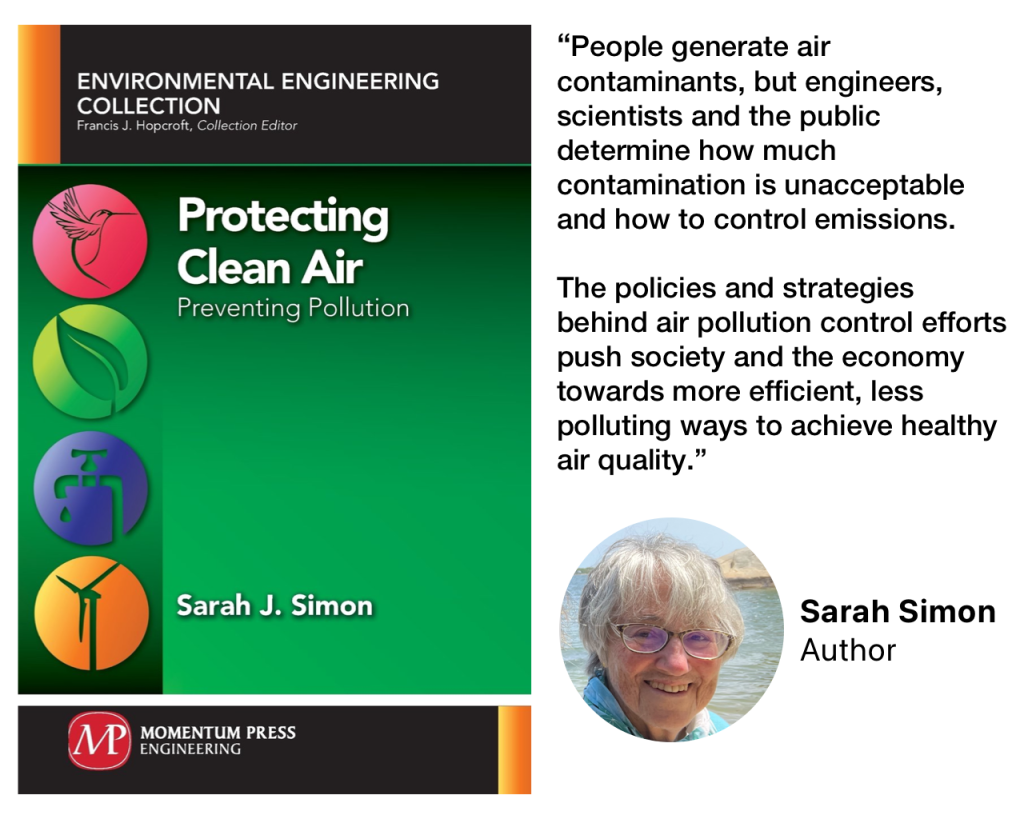
Thank you for joining us, Sarah. We’d like to ask you a few questions and get your thoughts on air quality. To start, how do you see air quality impacting peoples’ lives?
We all can see and feel some aspects of air quality. It is often said, “You are what you eat,” but it is also true that what you breathe affects what you are, both in health and general attitude. Who wants to live next to an oil refinery or a cement factory?
When we are inspired by the clear, long vistas of the high, dry plains of the Western US and their starry skies, we are looking through some of the purest, driest air on earth Our senses tell us about many of the trace contaminants in the air – visible plumes impeding the view, the pleasant fragrance of flowers, the odors of cooking (or burning) a good meal, or the smell of toxic, escaping, gasoline vapors when we fill up our gas tanks.
For most of human history, smoke has often been a signal rather than a sign of pollution. Even today, smoke tells us about our choices, a prosperous manufacturing plant or the election of a new Roman Catholic pope. Smoke is solid particles or liquid droplets (particulate matter, PM), that block light. People have always known that eyes tear up or sting in the middle of a heavy smoke plume but today we know that high concentrations of small particles can seriously harm our health. But we can’t perceive many of the molecules in the air we breathe, whether indoors or out. We don’t see or smell some innocuous molecules, like water in the atmosphere, which must condense into droplets of water in clouds to see it.
Liquid fuels and combustion emissions are the largest cause of poor air quality in the world today. Humans don’t see or smell a wide range of airborne pollutants, among them fuel combustion emissions other than PM, and many toxic chemical pollutants. Various pollutant emissions humans can’t sense produce poor air quality that harms our health, whether immediately or through small exposures over a period of days and years.
Poor air quality also affects the welfare of the environment. Aside from direct contact with air pollutants, when rain and snow flushes sulfur, nitrogen oxides (NOx), carbon monoxide and dioxide (CO and CO2 ) pollutants out of the atmosphere, they cause acidification and ecosystem impacts. Atmospheric CO2 concentrations over about 300 ppm warm global physical systems and disrupt the water and carbon cycles we depend on – the weather and agriculture.
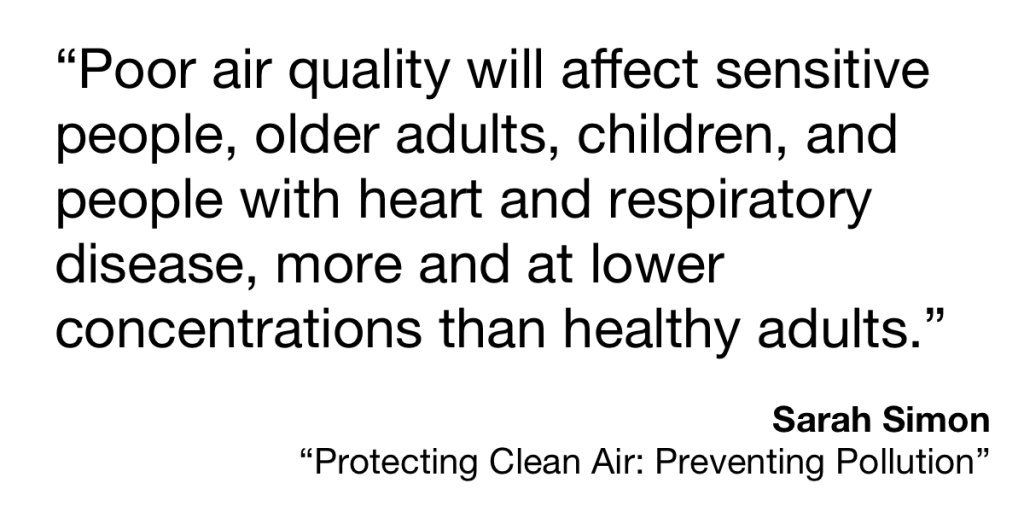
You once mentioned to me that you think of evolution – and human impact on the world – in long timeframes. Overall, do you think the air quality is improving? Or not?
Well, since humans discovered how to control fire, we have certainly done our best to release fuel emissions and other waste into the atmosphere (and water and land). From the first cook fires to today’s energy and industrial emissions, we haven’t paid much attention to any contaminants, whether or not we could see or smell them.
Thankfully, for Americans at least, the air we now breathe outdoors, “ambient” air, is cleaner than it was 60 years ago. The US and other industrialized nations have regulated and reduced emissions of PM, sulfur and nitrogen oxides, CO and volatile organic compounds (VOC, hydrocarbons) from power plants and vehicles, and industries.
Why? Around 1965, air pollution control laws were coming into force in the US, including legislation in many states. Major revisions to the federal Clean Air Act were passed in 1970, targeting pollutants that harm human health and welfare throughout the nation, and the new Environmental Protection Agency (EPA) set “National Ambient Air Quality Standards” (NAAQS) based on extensive health and welfare studies. The Act also mandated that the biggest, electric power plants, large boilers, and vehicles had to control their pollutant emissions. Engineers designed more control systems to remove particulates and invisible pollutants from “smokestacks” and tailpipes. Control technology and bans on high sulfur and ash fuels, like coal, oil, and diesel, greatly reduced the emission rate of SO2 , PM, NOx, CO, and VOC.
But I hesitate to say unequivocally that air quality is improving, especially from a global perspective. In total, people around the world have more cars, trucks, trains, planes and ships burning more fossil fuels and emitting more pollutants, including SO2, CO2 and NOx. Emissions of several classes of carbon-based, volatile organic compound (VOC) pollutants are much greater than in all of previous human history. Gasoline evaporates and small quantities of unburned fuel are emitted (VOCs), even from the newest and most efficient internal combustion engines. Whereas “smog” was originally smoke pollution in fog, today unhealthy hazy air occurs when VOC and NOx mix in hot weather and transform into a caldron of harmful chemicals. Methane, the simplest carbon compound (CH4), is not considered to be a VOC because it does not react like larger organic molecules and contributes to smog. However, natural gas is methane, and the emissions of this unburied, fossil carbon gas leaks from gas pipelines in amounts nearly as large as bacteria and animals that create it naturally. Methane emissions from human activities, like feedlots and gas transmission, are now being regulated since it is a potent greenhouse gas.
Besides the increases in population and consumption, new, highly profitable industries have developed that produce synthetic, carbon-based chemicals (aka “organic”) from coal, petroleum and fossil gas, including plastics, fertilizers, pesticides, food additives, fabrics, and more. We then burn more fossil carbon fuels to produce energy for manufacturing these petrochemicals and to transport them to market. We throw away a large quantity of plastic and synthetic products as “waste,” especially in America. When burned up in municipal waste combustors, the fossil carbon is emitted as CO2 along with other byproduct pollutants.
Over the last few decades, more detailed investigations have found that some, individual synthetic organics pose specific threats to our welfare and the environment. For example, scientists discovered that the remarkably indestructible, carbon compounds like freon, with chlorine or fluorine atoms, were thinning the two or three-molecule ozone layer at the edge of space that protects the earth’s surface from high, damaging levels of the sun’s ultraviolet radiation. By a worldwide agreement to stop making these chemicals 30 years ago, we’ve been able to let the earth’s systems restore the ozone layer.
Will engineering for lower-emitting equipment balance out the emissions of so many more vehicles and higher energy demand around the world? Are there technologies and alternatives that will make a quick transition to a cleaner energy system possible? Can new synthetic petrochemicals that pose new risks be limited?
Those solutions will ultimately determine whether air quality continues to improve or deteriorate.
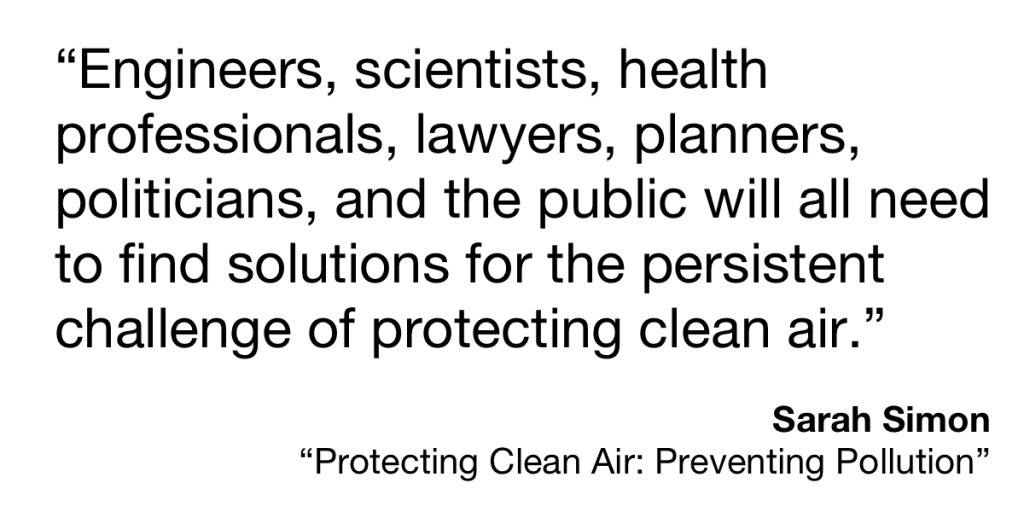
For the pollutants you mentioned in your previous answer, how long do they remain in the air?
Wind, other air movement and precipitation disperse and dilute pollutant levels, so air quality and people’s exposure change all the time. Gravity pulls heavy particles from the air and even small particles serve as nuclei for humidity condensing into water and precipitation. Precipitation is a great scrubber for NOx and sulfur dioxide (SO2 ), too. NOx can convert to nitrate and gaseous SO2 to sulfate, both tiny particles, when sunlight and temperature conditions support atmospheric chemical reactions.
Exactly which individual VOC compounds are present in the air changes rapidly when sunlight, temperature, moisture and NOx levels support chemical reactions.
Carbon dioxide (CO2) and methane, (CH4), stay in the air longer than the other pollutants. They are washed out of the atmosphere to some extent, but CO2 levels are also reduced in the natural, ecosystem carbon cycle, both the food chain and absorption in oceans and lakes. Trees and plants physically filter some air pollutants but, more significantly, they capture sunlight energy in sugars created with CO2. We see green plants growing and storing carbohydrates, nearly half of the carbon taken from the air and water into food chain energy is transformed by one-celled algae in the earth’s waters.
It is unfortunate that so much CO2 has been added to the air from fuel burning that the concentration has nearly doubled. At today’s levels, it is warming the atmosphere and is wreaking havoc with two physical cycles – the water cycle and the weather and climate. And the marine waters absorb a lot of the extra CO2 and are becoming more acidic.
How can we tell whether air quality is bad or improving?
Air quality, the level of air contamination, is a moving target – the air is constantly moving and dispersing contaminant emissions. The particles and sulfur of the early industrial revolution could be seen – smoke that blocked the sun’s light, tarnish on silver, and blackened facades of limestone churches and buildings. I remember that as late as the 1960s, at my grandmother’s apartment in the city, black dust deposits had to be wiped from windows and window sills. This is not common anymore.
For nearly a century, measuring PM pollution was done by observing how dense the smoke was or by drawing a measured quantity of air through filters, drying the filters and then weighing the captured particulate. The acidity level of sulfur dioxide resulting from coal and oil burning used to be measured by how quickly a piece of nylon stocking would disintegrate,
In the last 60 years, spectacular advances in monitoring and data systems have been realized. Much more sensitive, and often less costly, monitors have made it possible to detect pollutants and determine air quality at much lower levels. Electronic sensing devices now provide instantaneous data at parts per billion levels and the data reveals whether air is cleaner or getting worse.
Monitoring data around the US shows lower ambient concentrations of PM, sulfur dioxide and NOx than in 1970. The toughest air quality monitoring challenge is the detection of VOCs because they change in the atmosphere. When VOC is reacting and causing smog, ozone serves as the indicator chemical because it is an intermediate reaction byproduct that is produced in greater quantities with higher concentrations of VOC and NOx and greater chemical activity. Thanks to better monitoring, public health studies on the effects of exposure to low levels of chemicals have also proliferated. Although respiratory doses of harmful pollutants can be matched with various health impacts and trends, health risks come from many other factors as well – our food, stress levels, and genetics to name just a few.
However, extrapolating field measurements to determine short-term air quality impacts and trends or to quantify air quality in between monitors is imprecise. Data from the monitoring networks also says nothing about indoor pollutant concentrations. That’s where another tool, simulation modeling, can be used with real-world data to better understand air quality and trends. Models predict how emissions disperse and provide estimates of pollution levels.
I was surprised to find out that some of our improved knowledge of air quality and environmental protection has roots in the birth of the atomic age. After World War II, the world was extremely worried about radioactive fallout from atomic bomb testing. Monitoring showed that extra radiation was ending up in milk.
Engineers and scientists deployed early computing technology for modeling and input emission and weather data to predict, “model”, elevated radiation levels. We still apply updated and enhanced versions of these models to help understand where emissions from electric stations, building smokestacks and car tailpipes will go and what concentration levels the public might be exposed to.
Modeling can only predict pollution concentrations based on expected wind and weather patterns. It is a wonderful tool for understanding how much emission reduction is needed from facility smokestacks to meet standards. Monitoring can only take snapshots of air quality concentrations but it can show real trends and validate modeling estimates that prove what people are exposed to.
Ultimately, we need to consider both monitored air quality data and the results of dispersion modeling to determine air quality trends.
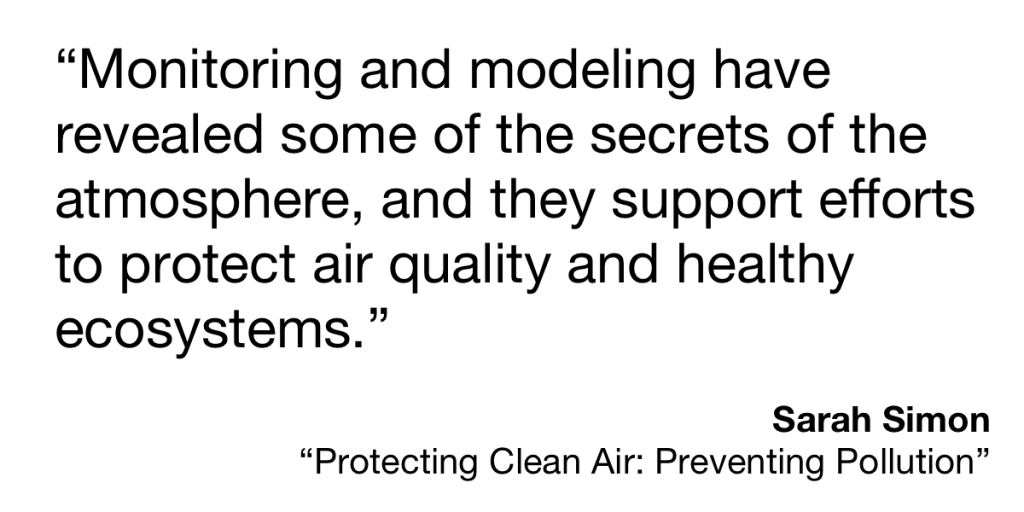
Of what air quality trends can we be sure of moving forward?
Because we can track boiler and furnace emissions from burning coal and oil with some confidence and have monitoring data records, we know that the impact of the US and European energy systems on air quality has already been decreasing for more than a century.
But pushing the other way, the planet’s 8 billion people demand much more energy every year. Existing generating stations and some new ones are using more high sulfur and high ash (particulate) coal and oil, and more people and businesses own more cars and trucks and they are “driven” further.
The ongoing question is: will we make the transition to more efficient and low-carbon energy quickly enough to counterbalance increased emissions and a resulting decline in air quality? (For more in-depth information, see https://www.epa.gov/air-trends)
In your experience, does air quality seem to be getting worse – with all of the wildfires – producing worse air quality?
For those regions that have been affected by mega-wildfires, the air is definitely a hazard until the smoke clears. Although the air had a distinctly hazy and orangish color in San Francisco during the 2022 fires, I am not sure if the conditions and health impacts were as bad as the “bad old days” in Pittsburgh 100 years ago. Steel mill emissions darkened the sky so much that street lights often turned on at noon and a person couldn’t see as far as the next street corner. It is unusual to see pollutant plumes from power plants and industries in America today. If you see one, it is almost always just condensed water droplets, except for tailpipes and home stoves.
I am more concerned about the fact that more and more diesel trucks and gas furnaces and stoves are in use and that drought conditions caused by climate change are permitting more dust to become airborne and in turn enable those wildfires. These are causing poor air quality and are exposing people nearby to potentially dangerous, short-term, NOx, PM and CO concentration levels. Recently, US EPA proposed lowering the NAAQS for PM, based on studies that show that this action would reduce health risks and the number of deaths, especially for elderly Americans and many communities of color.
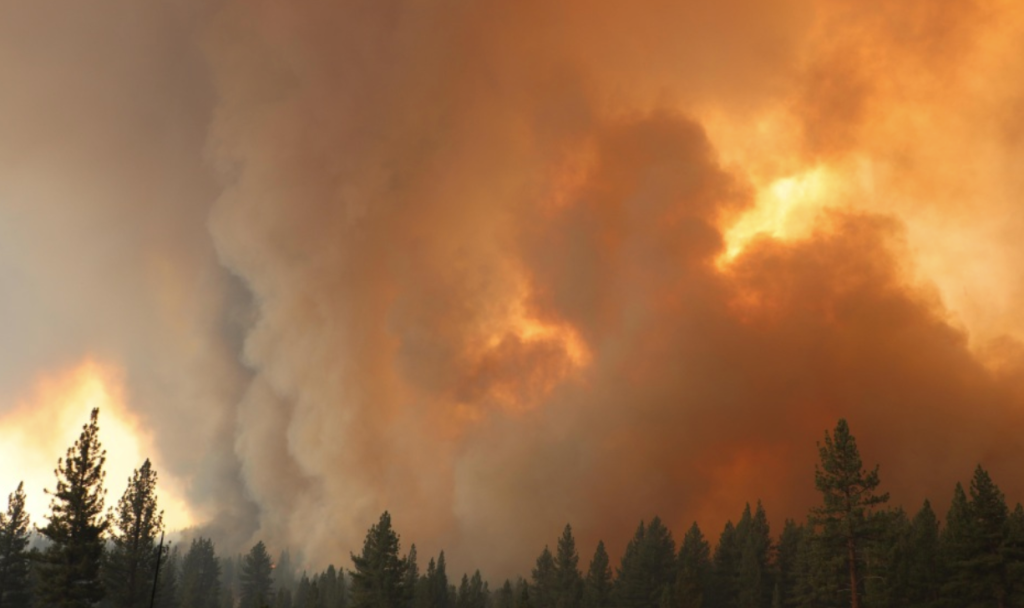
You wrote an excellent book on air quality in 2017, (Protecting Clean Air: Preventing Pollution” (published by Momentum Press). Thank you for writing it. If you were to write a follow-up to the book in 2023, are there additional topics that you would cover? Or other updates you would include?
In the book, I was able to lay out the history of how humans have protected air quality up through the 20th century, but it didn’t address the engineering that reduces emissions – the ways we actually continue to improve and preserve air quality for the future.
Also, my book was about the key pollutants addressed under the US Clean Air Act up until the year 2000, and it did not really explore CO2 and other greenhouse gas emissions. Many scientists have been concerned for decades about the effect of CO2 emissions on climate. But, it wasn’t until a 2007 Supreme Court decision that human welfare from the extreme weather disasters from our warming earth required the US President to add CO2 to the list of key pollutants.
In 2015, the Paris Agreement (2015) opened everyone’s eyes to the enormous harm to our welfare (and the world) being caused by extracting and burning fossil carbon for the current global energy system. The science is clear that to control global temperature increases and the changing climate, humans must peak our use of fossil fuel within the next 2 years. To avoid drastic climate, agriculture, and biodiversity disruptions, we cannot be releasing fossil carbon emissions into the air 25 years from now.
When and if no fossil carbon is burned, air quality will be better and pollution control work will look very different. In the future, at least half of the pollutant emissions regulated today will be eliminated – PM, NOx, CO, and VOC from burning fossil fuel products. Air quality protection will then be focused on organic and toxic chemical emissions, which hopefully will no longer be synthesized from virgin coal and petrochemicals. In addition, if people take better care of our ecosystems, both above and below ground level, as the changing climate disrupts their balance, we can avoid a lot of the particulate emissions associated with wildfires and disturbed landscapes.
Do you monitor air quality, and if so how?
I don’t personally keep a close watch on local pollution levels – I am fortunate in that I thoroughly enjoy the clean air in my coastal town, pretty far from a city, with a lot of open space and few people. I do listen to air quality alerts that our state environmental agency issues when the index is over 100, most often in the summer during smog events. I hear these alerts from the media and weather reports. I have also installed your LocalHaze app, which I occasionally use to check the air quality around the country and the world. Recently I’ve been watching the monitor data to see if wildfire smoke has blown into my area.
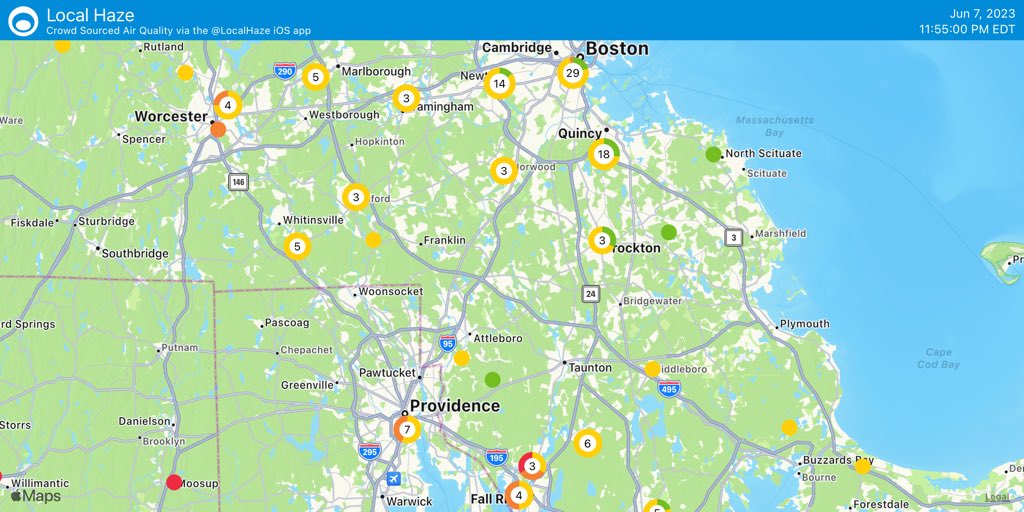
What do you think of citizens taking a more active role in air quality?
I think it’s great when citizens are actively concerned about air quality, or water quality, and are actively watching. Many more should have a direct connection with the world around us – observation and discovery are what make children such impressive little scientists. I can’t imagine any “miracle” more amazing than our planet and the life that has evolved on it. Studies have shown that just walking in a forest and appreciating its beauty or living on a street with trees is good for mental health.
Tracking changing air quality conditions will take a little more effort and science education than environmental activities usually thought of as “citizen science,” for example, fish counts in our lakes and rivers. People can monitor air quality by buying new, inexpensive monitoring instruments and maintaining them. Whether placed outdoors or inside, the monitors must be calibrated to ensure that their data is accurate and precise enough to be considered for use with data sets collected by official, well-supported and maintained monitoring networks. Or folks may want to track respiratory health issues in their family and neighbors. Health data, including location and time of collection, is what health professionals (doctors, epidemiologists) and air quality staff can use to determine chemical exposures and doses that may be the cause of poor health.
Each of us can be active observers of the air quality around us and learn how we can contribute to ensuring that the blanket of air surrounding Earth continues to support a flourishing web of life.
Thank you Sarah, we appreciate you sharing your thoughts on air quality with us.
Detailed biography for Sarah J. Simon

Sarah J. Simon is an MIT graduate and trained as a civil engineer. She participated in the national, award-winning team that established state acid rain programs and went on to direct the monitoring, database, and modeling staff of the Massachusetts Department of Environmental Protection air program.
Over the past two decades, Sarah managed environmental projects in a Fortune 200 company, consulting firms, and an energy services company generating green power. Sarah has also presented technical papers on the impact and compliance needs of energy projects, in particular, landfill biogas facilities. She led the Environmental Group of the Boston Section of the American Society of Civil Engineers and the Society of Women Engineers-Boston Section.Sarah is the author of the book “Protecting Clean Air: Preventing Pollution” (published by Momentum Press in 2017).
The Local Haze app can be downloaded for free on the Apple App Store.